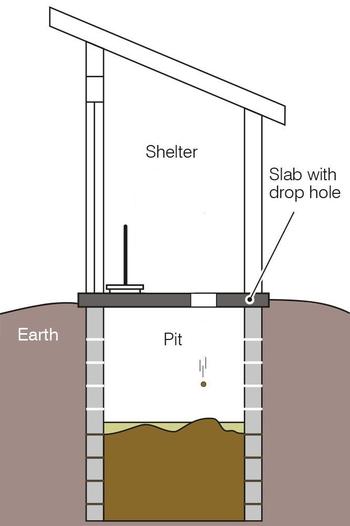A pit latrine collects excreta in a pit dug in the ground beneath the toilet structure. If the soil is loose the pit needs to be lined with, for example, loose bricks to prevent the wall from collapsing. During storage in the pit, decomposition of the organic substances takes place under anaerobic conditions. Seepage of water into the surrounding soil takes place through the sides and bottom of the pit. During seepage further decomposition of organic matter by soil bacteria takes place reducing the BOD of the water. There will also be die-off of bacteria and viruses during storage and as the water percolates through the soil. Bacteria under these conditions do generally not remove nutrients, so pollution of groundwater will often occur. Control of odor and insects are important with a pit latrine. This is achieved by having a vented pit. The pit will eventually fill with fecal sludge and needs to be emptied. An alternative way of dealing with a full pit is to dig another pit and relocate the sanitary platform and toilet housing to the new pit. The full old pit can be covered with soil, preferably of greater than 15 cm depth to prevent disease. (UNEP 2000)
